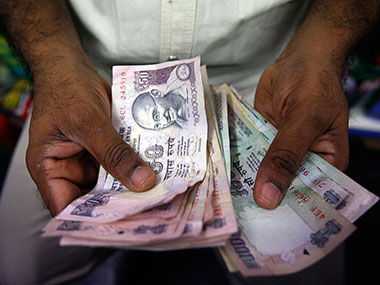The recommendations of the pay commission have come at a time when there is a demand slump in the economy. Households are not spending as incomes have not risen, and there is constant focus on the rural households to provide an impetus which is not coming due to successive weak monsoons in 2014 and 2015. In this background, the higher salaries recommended along with pensions comes as breath of fresh air. And this time there is less umbrage over these hikes. There are several issues here. The first is the quantum of increase in salaries and pensions. At around 24%, the amount is quite large, and while there is justification, we need to move over to a system where this is done gradually and more frequently rather than as a big shock. This would make it easier to absorb. Right now absorbing an amount of Rs 1 lakh crore is a task. [caption id=“attachment_2392318” align=“alignleft” width=“380”]  Reuters[/caption] Second, the hike in central government pay scales would automatically mean that even the state personnel scales would go up by a comparable level which will necessitate corrections for PSUs, PSBs, universities, regulators and so on. Therefore, the total impact in the next couple of years will be more than the Rs 1 lakh crore we are talking of and could be in the range of Rs 2.5 lakh crore, depending on the rate of scale up of salaries. Third, will this amount be spent? With around 30-35% of the total going as pensions, there would be more savings typically rather than consumption. However, for the balance, there would be spending on consumer goods, homes, automobiles and other electronic gadgets which will have a positive impact on production. If 0.65% of GDP is the central government impact and the states and other entities add another 0.85% (0.65+0.2%), roughly Rs 2.25-2.3 lakh crores of potential spending will enter the market and assuming 30% is saved on an average, we are still talking of around Rs 1.5 lakh crore so spending which will be very significant. Fourth, the government will have to work harder on the fiscal arithmetic. Presently, the budget is doing well with non-tax revenue being buoyant, subsidy bill being lower even though we are struggling with the disinvestment target. The additional expenditure on pay bill has to be compensated from somewhere. Either revenue has to go up or some other expenditure has to be cut if we are to remain on the FRBM path. This will be a major challenge for the FM when he presents the FY17 Budget. As tax revenue increase would still be uncertain, the government has to look at lowering expenditures to begin with to make sure that the fiscal deficit is contained. Fifth, the state governments have a greater challenge. Most of them are working around the 3% fiscal deficit number. Accommodating the additional increase would be a touch and go. But a few weeks back the government put forward the UDAY Scheme where states were to restructure the SEBs. This means taking on some additional debt in the next two years. Depending on the timing of the state pay commission recommendations, they will have a sticker path to cross as they would have to address this necessity of higher salaries and the option of reforming the SEBs along with other pressures like spending partly on smart cities and other programmes. Sixth, the move to give higher salaries brings central government staff compensation closer to the private sector salaries, which is good. But two questions remain. First, there is no performance-linked pay matrix which exists in the private sector. Hence, the element of more responsibility is not part of the structure. Ideally the 24% increase should have been split to ensure that some performance parameters are met. The present approach is democratic across all grades as well as silent on performance. The second is that while some allowances are removed, important ones like housing or car facilities continue to be provided. If the goal is to move to private sector-like pay structures, the Commissions in future should also move away from providing these perquisites which have high values. In fact, few private sector jobs carry such benefits with the amounts being monetised in the pay package. An offshoot can be that if all accommodation owned by the government were to let out to private parties, the rent earnings could be substantial. Last, the OROP has been generalised to cover the entire civil service which again is democratic as we cannot have different principles for different arms of the government given that almost all structures are universal in nature. But the major challenge is the amount of money involved here which would not just be recurring but would keep mounting at an accelerated rate as all old pensions keep getting indexed to the new benchmark. The pay commission has evidently looked at making everyone happy which will lead to more spending. At a time when investment is not picking up due to excess capacity in most sectors, this move should help to alleviate the situation. The fiscal pressures will mount, but then once the government accepts the report, it has to gear itself for the same, which will top the agenda now when the next Budget is announced. The author is chief economist, CARE Ratings. Views are personal
The fiscal pressures will mount, but then once the government accepts the report, it has to gear itself for the same
Advertisement
End of Article
Written by Madan Sabnavis
Madan Sabnavis is Chief Economist at CARE Ratings. see more


)

)
)
)
)
)
)
)
)



